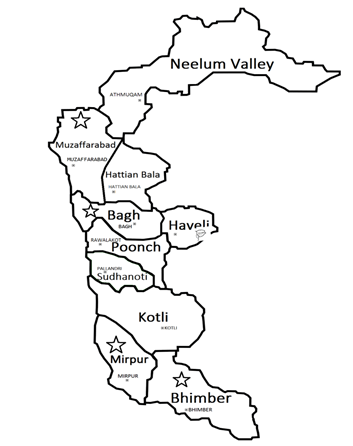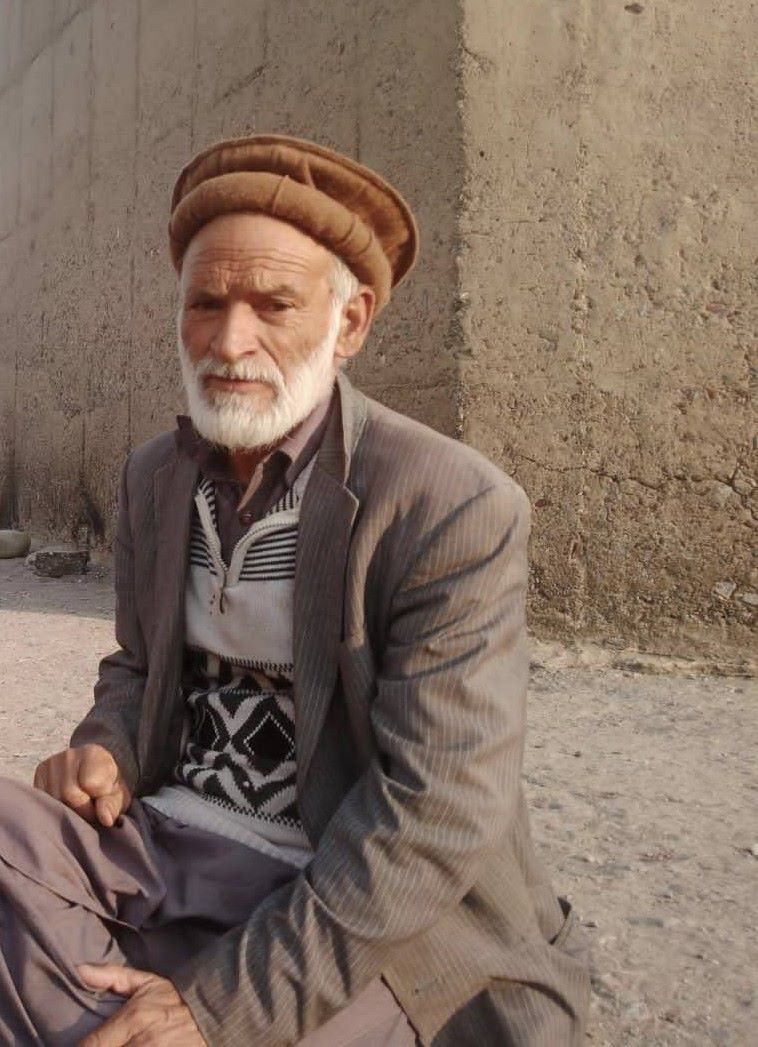Pahari, which means “mountainous.” Pahari-Potwari is a language group found on the Pothohar Plateau in the far north of Pakistani Punjab, as well as in most of Pakistan’s Azad Kashmir and western areas of India’s Jammu and Kashmir. The silk route team surveyed the Potwari-Pahari-speaking ethnic group in different settlements in Pakistan. The ethnic community is composed of three major sub-groups, namely, Pahari, Potwari, and Mirpuri. Pahari is predominantly occupied in the Murree tehsil of the Rawalpindi District in northern Pakistan. The Potwari sub-group is the residents of the plateau south of the Pahari dialect area. From the Salt Range, the region extends northward to Rawalpindi and eastward to the Jhelum River. And the third group is from the district of Mirpur in Azad Kashmir.

The stars in the map indicate the Potwari-Pahari villages
The northern regions of Pakistan have two distinct languages – Potwari and Pahari. Potwari, primarily spoken in the Pothohar region of Punjab province, is an Indo-Aryan language. On the other hand, Pahari is a dialect continuum comprising several different languages spoken in the mountainous areas of northern Pakistan, including Azad Kashmir, Gilgit-Baltistan, and Khyber Pakhtunkhwa.
Population
The Pahari-Potwari population is approximately 2,500,000 in Pakistan. The number of total users in all countries is 3,541,900 (global population). The people of this community are strongly influenced by their neighboring groups such as Punjabis, Gujjars, Sudhans, Rajputs, etc.,
Vocation
The hereditary occupation of the people in the community is cultivation, agriculture, and life-stock. People today engage in a wide range of activities, including mining, selling dry fruits, trading medicinal herbs, creating handicrafts, and carving wood.
Socio-Cultural Features

As aforementioned, the Potwari-Pahari groups live in different villages and areas with resources for agriculture, animal husbandry, and finding herbs and mines. The major challenge of the community is the presence of socio-economic instability due to its educational backwardness. The traditional dress of women is the shalwar kameez in Pahari style. Both men and women commonly wear a shalwar kameez. Women use a shawl to cover their heads and upper body. The people of this community are mostly illiterate. But now they send their children to school. Moreover, the community is highly patriotic.
Language
The Potwari-speaking people primarily speak Potwari, and they are concentrated in the Pothohar region of Punjab. This includes people from the cities of Rawalpindi, Islamabad, and Jhelum, as well as smaller towns and rural areas in the surrounding region.
Pahari, on the other hand, is spoken by a number of different ethnic groups in northern Pakistan, including the Hindko-speaking people in Khyber Pakhtunkhwa, the Pahari-speaking people in Azad Kashmir, and the Shina-speaking people in Gilgit-Baltistan. These groups have distinct cultural and linguistic traditions, but they are all part of the wider Pahari-speaking community in the region.
The community members use their mother tongue in all the possible domains within their group. Nevertheless, the youngsters implicitly try to develop a bilingual additive strategy through which they main their mother tongue while improving skills in Urdu for inter-community and other educational and formal usages. The community reports that they want to see their mother tongue gets flourished as the mainline language because it is their identity and soul of communication.